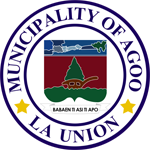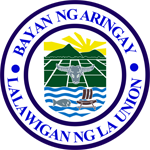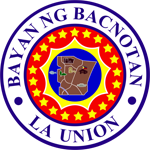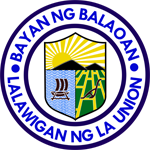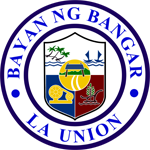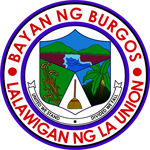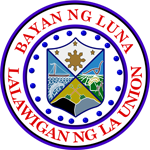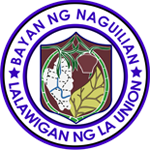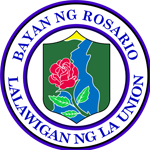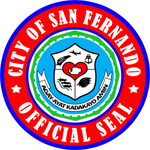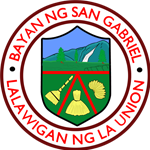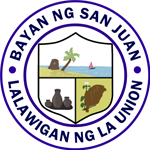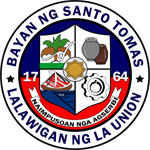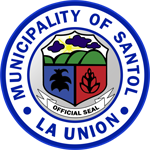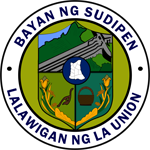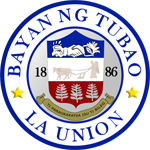

Location and Land Area
The three municipalities of Tubao, Pugo, and Rosario comprise the Tourism Development Area (TDA) of South Eastern Circuit.
The western border is the West Philippine Sea while the Southern and Eastern borders are the Province of Pangasinan and Province of Benguet, respectively. The circuit has a total land area of 18,616 hectares, which is 12.47% of the total land area of the Province. The South Eastern Circuit is predominantly hilly.The Municipality of Rosario is considered to have the widest lowland area with 7,000 hectares.

Coastal and Water Resources
On the west, where the coastal barangays in the circuit meet the Lingayen Gulf, there is very little level or nearly level land (0-3% slope). However, in major parts, the coastal barangays of Rosario namely Damortis, Bani and Rabon, and those going eastward of Nagtagaan, Benteng-Sapilang, Gumot–Nagcolaran, Amlang and western Cataguingtingan stretch out on undulating heights to rolling hills (8-18% slope), alternately with landforms of gentle slopes (3-18% sloping).
These mentioned barangays, having an elevation of less than 100 meters above sea level, are essentially the lowest areas inthe circuit. Other barangays practically lying on level to nearly level surface (0-3% slope) are Concepcion, Puzon, Tay-ac, Tabtabungao, Nangcamotian, Udiao, Camp-One, Bangar, Poblacion West, Poblacion East, and large portions on the west of Inabaan Sur. While comprising mainly of large areas of plain lands, these areas are located on higher elevation, particularly from the range of 100 to 300 meters ASL. Because of this feature, as well as of the clay loam soil types found in these barangays, the agricultural productive activities are concentrated in these areas.

Climate and Weather
Like any other circuits in the province, South Eastern Circuit belong to Type I Climate havingtwo (2) distinct seasons: the wet season, which is characterized by abundant rainfall, brought about by the southwest monsoon, and the dry season, which is characterized by the striking low rainfall due to passing of the northeast monsoon over the Cordillera Mountains.
The striking low rainfall during the dry season from November to April is due to the very effective shielding of the province from the northwest and even from the trade winds by the mountain ranges of Northern Luzon. As soon as a drift of wind from the southwest quadrant comes in May, there is an immediate increase in rainfall since La Union is unprotected from the west. Due to depressions and typhoons, which come very frequently in the region and owing to the presence of the so-called, wet southeast monsoon or moist equatorial air in the West Philippine Sea. The months of May to October have abundant rainfall, the maximum occurring in August.

Natural Hazards
South Eastern Circuit belong to the flat lands and the agricultural areas, which are susceptible to floods due to the overflowing of rivers. Thus, all the municipalities in the circuit are flood-susceptible areas.
Liquefaction areas are in the southwestern part of the province, which include Sto. Tomas and Pugo. The circuit is prone to land erosion owing to its slope (mountainous) and is on the active fault zone. Identified highly vulnerable areas are in the municipalities of Rosario, Tubao, Pugo and in the other municipalities from the other circuits.

Demographics
I. Population
Based on the 2010 official census of the National Statistics Office (NSO), South Eastern Circuit has a current population of 96,190 using the geometric method, for the period 2010 to 2015 it has an annual population growth of 1.86%.
South Eastern Circuit is unevenly distributed to the sixty-five (65) barangays, 17 of which are classified as Urban and the remaining 48 as Rural. Rosario is the most crowded among the municipalities in the circuit having a population of 52,679 in 2010 and 55,458 in 2015.
II. Poverty Incidence
South Eastern Circuit is a home of 103,877 (2015 NSO actual population count) dominantly Ilocano speaking people. Based on the official release on poverty statistics by the Philippine Statistics Authority, the poverty incidence among population in La Union was 12.2 percent in 2015 which is lower by 0.90 percent of Region I’s data of 13.1 percent. In the South Eastern Circuit, the Municipality of Tubao posted the highest Poverty Incidence at 15.90 percent while the Municipality of Rosario posted the lowest poverty incidence at 13.00 percent.
Likewise, the population density increased from 499 in CY 2010 to 540 in CY 2015, 41 persons more were added to the occupants of a square kilometer.
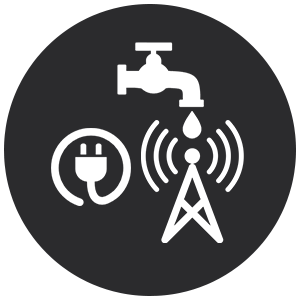
Utilities
I. Power
The La Union Electric Cooperative (LUELCO) provides power supply to residential, commercial, and industrial, tourism and institutional establishments of the South Eastern Circuit. It is noted that all of the barangays in the circuit are already electrified.
II. Water
Majority of the total household within the South Eastern Circuit has access to safe water supply. The Rosario Water District is the circuit’s main water provider. It serves not only residents within the municipality area but also to Municipality of Pugo. It has a water reservoir and complemented by its pump house with elevated steel tank. Other barangays water supply provided through the following water facilities: Barangay Water Works Association, Deep Wells, Shallow Wells, springs, and dug wells in the remaining barangays.
Households not covered by said water districts are still using Deep well and Shallow well sources of water.
III. Telecommunications
South Eastern Circuit relies on a combination of postal, telephone, broadcast and print media for its communication needs and requirements. Municipality of Rosario has a Post Office, which is situated at the Government center that serves as the mail distribution center. There are cell sites of communication facilities being installed in the circuit by different private service providers such as Globe/Touch Mobile, Smart/Talk, Digitel/Sun Cellular, and TelecPhil.

Commodities
Rice, corn, high value Crops, fishery and livestock are the top 5 top produce of the circuit. The majority of the produce in the circuit are being marketed and traded outside the circuit due to limited number of buying stations and the presence of outside traders offering equal or higher buying prices. Local palay traders as well, export their products outside the circuit.
South Eastern Circuit is sufficient in lowland high value crops, but products coming from adjacent municipalities and provinces compensate demand. Livestock production remains a viable and alternative source of livelihood in the circuit. Although the circuit has a large livestock population, especially large ruminants, it is mainly kept for draft purposes. There are commercial poultry and piggery farms operating within the circuit but their produce are being marketed outside the circuit or operating as contract growers for private entities such as San Miguel Foods Incorporated.

Accessibility
I. Gateways
There are five main access points into the South Eastern Circuit: Aringay, Agoo, Sto. Tomas, Benguet, and Pangasinan. The circuit can be accessed either by the Aringay-Agoo-Sto. Tomas Highway or the MacArthur Highway entering the municipality of Rosario. The municipality of Rosario hosts most of the accessible tourist service centers such as accommodation establishments and tourist sites.
II. Transportation
The circuit is bustling with public utlity vehicles such as jeepneys, tricycles, and buses. Reroute to Manila, Laoag City and other provinces, South Eastern Circuit is accessible to all provincial buses via the MacArthur highway. Commuters wait along the National Highway for buses such as Partas, Maria de Leon, Genesis etc. at any time of the day.




